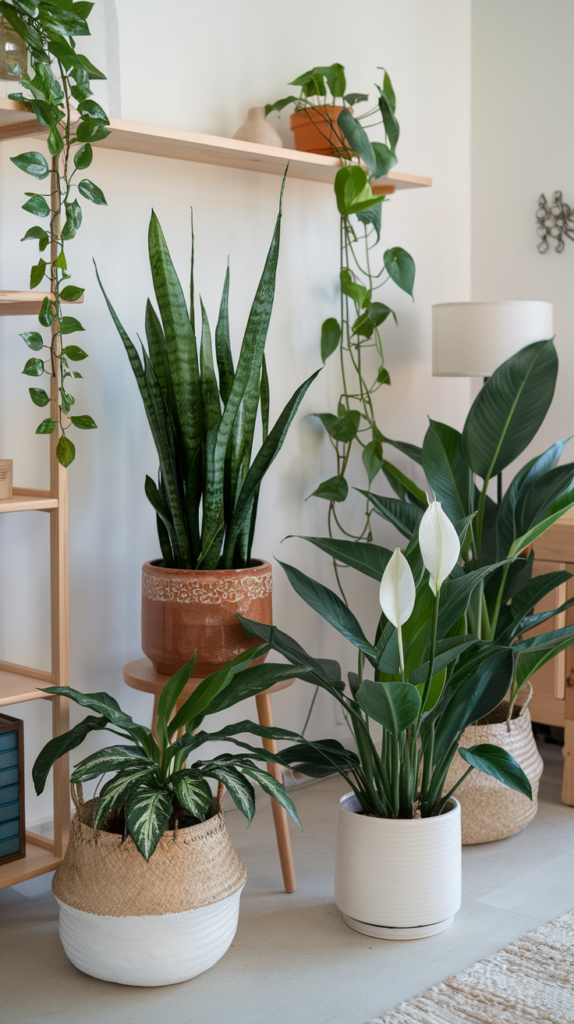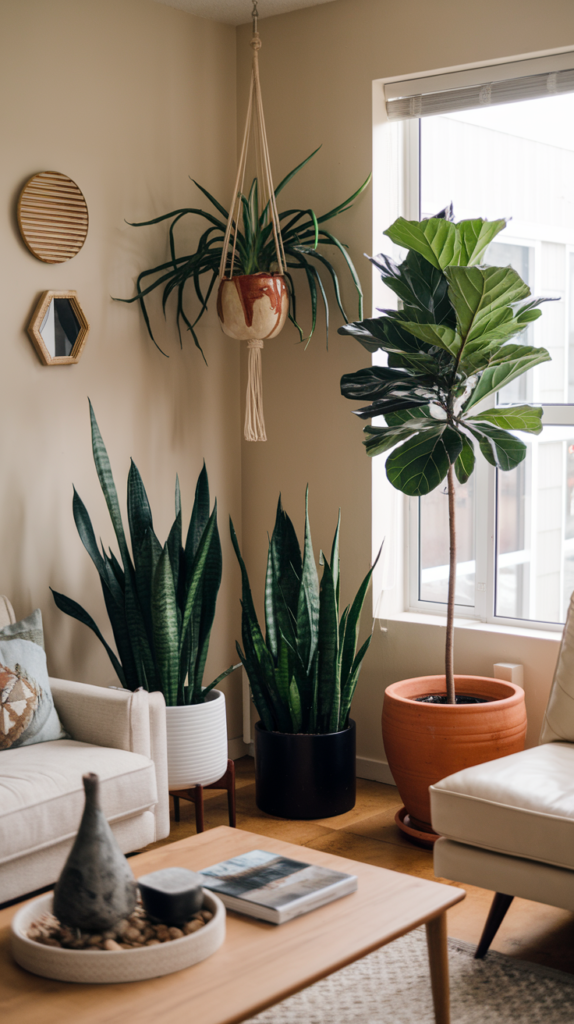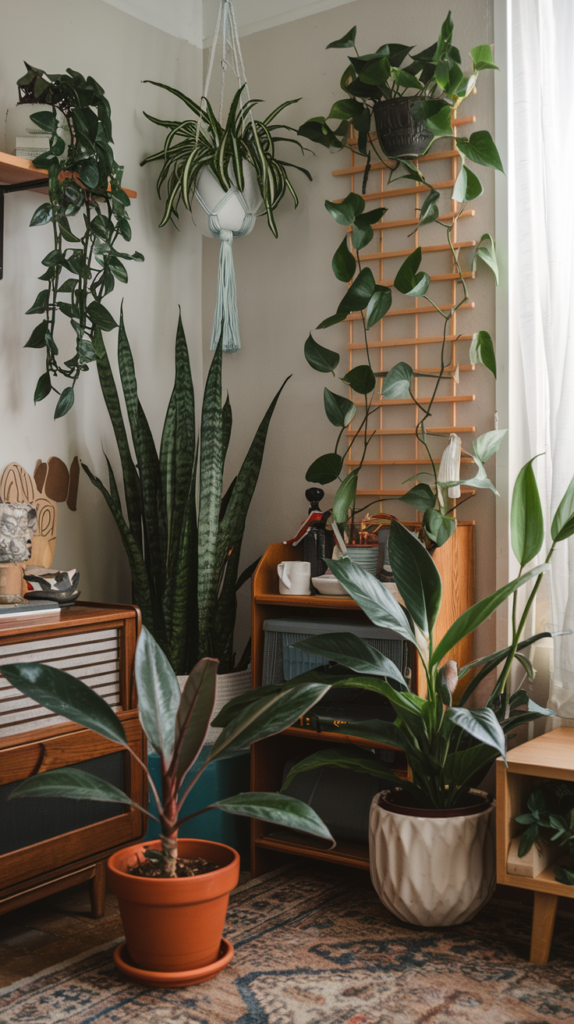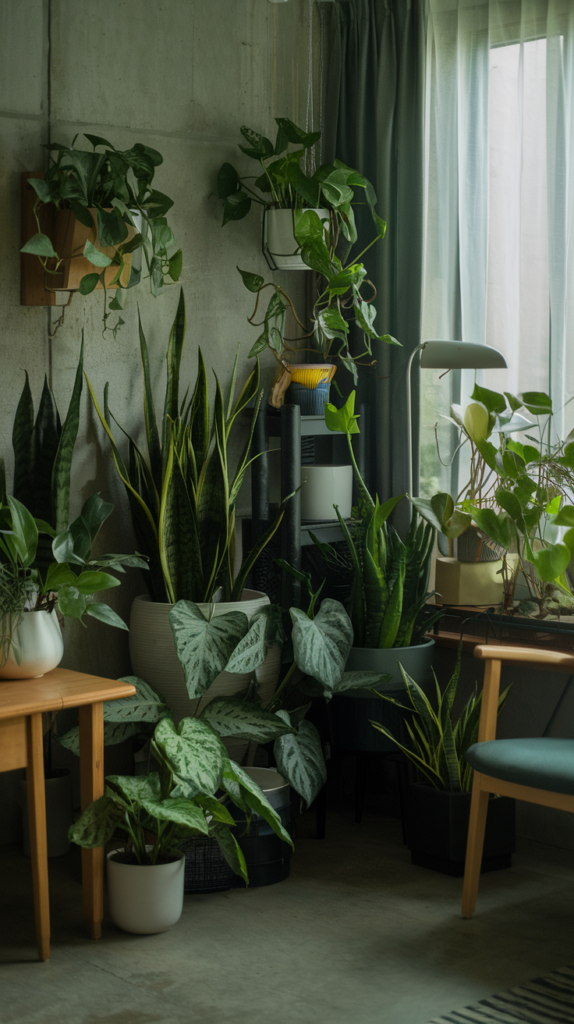13 Air-Purifying Plants That Improve Your Home and Health
Creating a healthy living environment has never been more essential, and air-purifying plants play a pivotal role in enhancing indoor air quality. These plants not only beautify your space but also remove harmful toxins, making them an excellent addition to your home or office. Let’s explore 13 air-purifying plants that can elevate your health and well-being.
1. Spider Plant (Chlorophytum comosum)
Spider plants are popular for their ease of care and resilience. These indoor air-purifying plants thrive in various conditions, including low light, making them suitable for almost any room.
- Benefits: Known for removing formaldehyde and xylene.
- Pet Safe: Safe for cats and dogs.
| Feature | Details |
|---|---|
| Light Requirements | Low to bright, indirect light |
| Watering | Every 1-2 weeks |
| Maintenance Level | Low |
2. Snake Plant (Sansevieria trifasciata)
Also known as mother-in-law’s tongue, the snake plant is incredibly tough and requires minimal maintenance. This plant is particularly effective at filtering out formaldehyde and benzene.
- Benefits: Converts CO2 into oxygen at night, making it ideal for bedrooms.
- Pet Safe: Mildly toxic to pets.
| Feature | Details |
|---|---|
| Light Requirements | Low to bright, indirect light |
| Watering | Every 2-6 weeks |
| Maintenance Level | Very low |
3. Peace Lily (Spathiphyllum)
The peace lily is renowned for its beautiful white flowers and air-purifying abilities. It excels at removing ammonia, benzene, and formaldehyde.
- Benefits: Adds humidity to the air, beneficial for respiratory health.
- Pet Safe: Toxic to cats and dogs, handle with care.
| Feature | Details |
|---|---|
| Light Requirements | Low to medium light |
| Watering | Weekly |
| Maintenance Level | Moderate |
4. Boston Fern (Nephrolepis exaltata)
The Boston fern is a lush and attractive plant that thrives in humid environments, making it perfect for bathrooms.
- Benefits: Known for removing formaldehyde and other toxins.
- Pet Safe: Safe for pets.
| Feature | Details |
|---|---|
| Light Requirements | Indirect light |
| Watering | Regularly (keep soil moist) |
| Maintenance Level | Moderate |
5. Rubber Plant (Ficus elastica)
The rubber plant is not only visually striking but also very effective at purifying indoor air. It can absorb toxins and promote better air quality.
- Benefits: Great for reducing dust and allergens.
- Pet Safe: Mildly toxic to pets.
| Feature | Details |
|---|---|
| Light Requirements | Bright, indirect light |
| Watering | Every 1-2 weeks |
| Maintenance Level | Low to moderate |
6. Pothos (Epipremnum aureum)
Pothos, also known as devil’s ivy, is a trailing plant that thrives in various lighting conditions. It’s excellent for beginners and helps in removing toxins like formaldehyde and carbon monoxide.
- Benefits: Fast-growing and easy to propagate.
- Pet Safe: Mildly toxic to pets.
| Feature | Details |
|---|---|
| Light Requirements | Low to bright, indirect light |
| Watering | Every 1-2 weeks |
| Maintenance Level | Very low |
7. Bamboo Palm (Chamaedorea seifrizii)
The bamboo palm adds a tropical vibe to your space while effectively filtering indoor air pollutants like formaldehyde, benzene, and trichloroethylene.
- Benefits: Great for humidifying the air.
- Pet Safe: Safe for pets.
| Feature | Details |
|---|---|
| Light Requirements | Low to bright, indirect light |
| Watering | Every 1-2 weeks |
| Maintenance Level | Low |
8. Dracaena (Dracaena marginata)
Dracaena plants are known for their striking foliage and air-purifying qualities. They effectively remove toxins such as benzene, formaldehyde, and trichloroethylene.
- Benefits: Requires little light and water.
- Pet Safe: Toxic to pets; handle with care.
| Feature | Details |
|---|---|
| Light Requirements | Low to moderate light |
| Watering | Every 2-3 weeks |
| Maintenance Level | Low to moderate |
9. ZZ Plant (Zamioculcas zamiifolia)
The ZZ plant is a popular choice for low-light environments. Its glossy leaves and hardy nature make it perfect for offices and homes.
- Benefits: Very low maintenance and drought-resistant.
- Pet Safe: Mildly toxic to pets.
| Feature | Details |
|---|---|
| Light Requirements | Low light |
| Watering | Every 2-3 weeks |
| Maintenance Level | Very low |
10. Areca Palm (Dypsis lutescens)
The areca palm is a stunning indoor plant that not only purifies the air but also acts as a humidifier. It’s great for improving air quality and adding moisture.
- Benefits: Known for removing toxins like xylene and toluene.
- Pet Safe: Safe for pets.
| Feature | Details |
|---|---|
| Light Requirements | Bright, indirect light |
| Watering | Regularly (keep soil moist) |
| Maintenance Level | Moderate |
11. Lady Palm (Rhapis excelsa)
The lady palm is an elegant plant that thrives in various indoor conditions. It’s particularly effective at filtering out pollutants and improving air quality.
- Benefits: Great for reducing indoor allergens.
- Pet Safe: Safe for pets.
| Feature | Details |
|---|---|
| Light Requirements | Low to bright, indirect light |
| Watering | Weekly |
| Maintenance Level | Low |
12. Aloe Vera (Aloe barbadensis miller)
Aloe vera is well-known for its healing properties, but it also acts as a natural air purifier. This plant can filter formaldehyde and benzene, making it ideal for bedrooms and kitchens.
- Benefits: Produces oxygen at night.
- Pet Safe: Mildly toxic to pets.
| Feature | Details |
|---|---|
| Light Requirements | Bright, indirect light |
| Watering | Every 2-3 weeks |
| Maintenance Level | Low |
13. Chinese Evergreen (Aglaonema)
Chinese evergreen plants are popular for their stunning foliage and ability to thrive in low-light conditions. They are effective at filtering out various air pollutants.
- Benefits: Known for improving indoor air quality.
- Pet Safe: Mildly toxic to pets.
| Feature | Details |
|---|---|
| Light Requirements | Low to moderate light |
| Watering | Every 2-3 weeks |
| Maintenance Level | Low |
Air Purification Benefits of Plants
Incorporating air-purifying plants into your home can dramatically improve your indoor air quality. Many of these plants have been recognized by NASA for their ability to filter indoor air pollutants. From indoor air-purifying plants to pet-safe varieties, there’s a perfect option for everyone.
Tips for Caring for Air-Purifying Plants
- Choose the Right Plant: Consider the lighting conditions and your ability to maintain the plant.
- Water Wisely: Overwatering is a common issue. Make sure the pot has drainage holes and let the soil dry out between watering.
- Fertilize Occasionally: A balanced houseplant fertilizer can support growth but should be used sparingly.
- Regular Dusting: Wipe leaves regularly to enhance their ability to absorb toxins.



